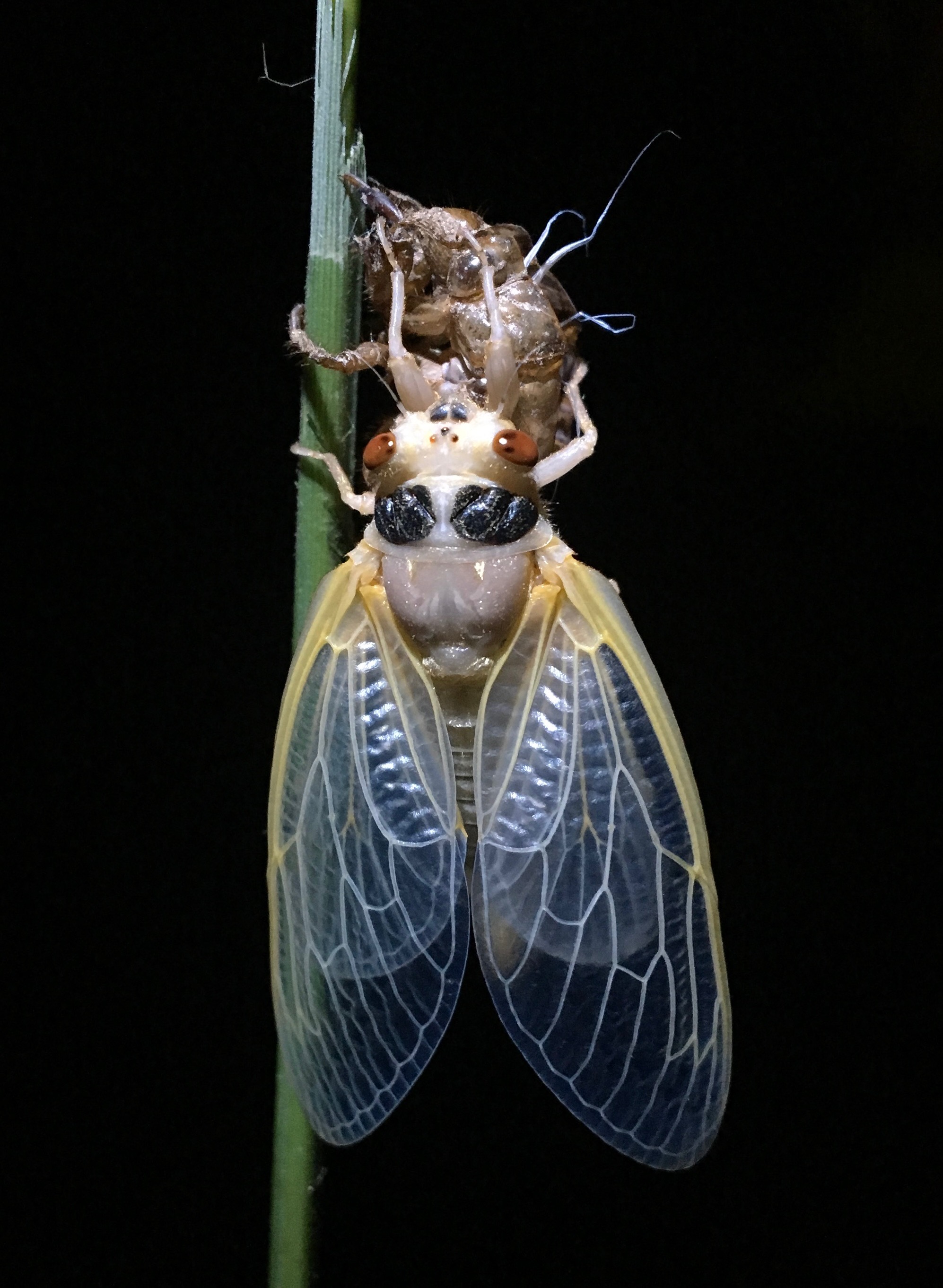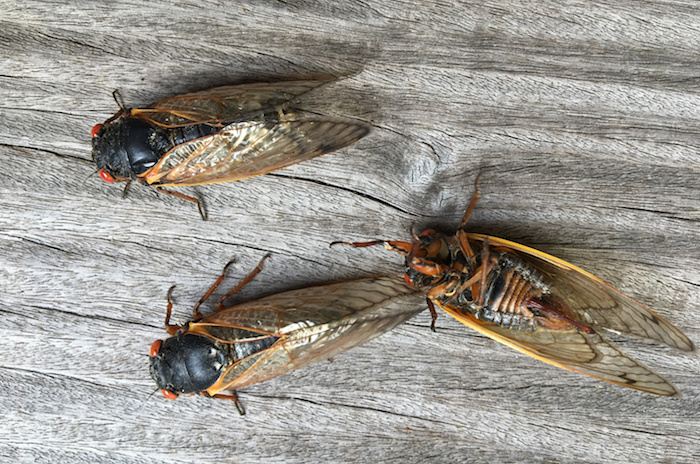Media Contact:
Cate Douglass; cdouglass gwu [dot] edu (cdouglass[at]gwu[dot]edu)
gwu [dot] edu (cdouglass[at]gwu[dot]edu)
WASHINGTON (October 19, 2023) – Every 13 or 17 years, billions of cicadas emerge from the ground to reproduce in eastern North American deciduous forests. One of the largest emergence events of these insects happened in 2021 when theBrood X cicadas emerged. Researchers who studied that once-in-a-generation event are now unveiling the impact this occurrence had on forest ecosystems, specifically on birds, caterpillars and trees.
In a new study published today in Science, researchers at the George Washington University, Georgetown University and the University of Maryland quantified the widespread changes the 2021 periodical cicada emergence had on the feeding patterns of birds and its downstream effects. The research team says this is one of only a few studies that has explored the indirect effects of periodical cicada emergence events on forest food webs.
The study finds that more than 80 species of birds opportunistically switched their diets to cicadas during their emergence. That feeding frenzy on cicadas relieved some of the predatory pressure on the birds’ typical prey, forest caterpillars, which consequently increased in abundance, resulting in more leaf damage on their host oak trees. Researchers collected their data at two study sites in the Mid-Atlantic portion of the Brood X range in the United States.
“Our findings really show how interconnected these ecosystems are, how plants, animals and all sorts of organisms are all deeply connected. When you shift the behavior or the population of one of those organisms, the effects ripple through the ecosystem in surprising ways,” Zoe Getman-Pickering, first author and former postdoctoral researcher at GW, says. “I think it’s important to remember that as humans are impacting the ecosystem – through climate change, through development of natural areas, through the introduction of invasive species – we are altering complex foodwebs in surprising ways.”
Periodical cicada emergence events only last for about five to seven weeks. The research team collected data before, during, and after the cicada emergence, deploying decoy caterpillars to track bird feeding patterns. They also recruited the help of the broader birding community to crowdsource additional observational data about which birds were feeding on cicadas. In addition to the clay decoy caterpillars, the researchers counted the number of caterpillars on oak trees during the emergence and measured the subsequent damage they caused to the leaves of their host trees.
Not only do these massive emergence events help scientists better understand how a sudden influx of a particular food source can rewire complex food chains and disrupt forest ecosystems, the study authors say their findings have larger implications for bird conservation.
“Birds are a really important regulator of insect herbivores and the amount of damage that plants receive. Over the last several decades, there’s been a significant decline in bird populations,” John Lill, study co-author and a professor of biology at GW, says. “Our study provides a glimpse of what a world with fewer birds might look like. That would include increased damage to both forestry and agricultural crops, which has consequences for productivity and the economy."
The research team suggests that their findings related to the ecological consequences of the cicada emergence may represent a more general, though little-studied, pattern.
"Whenever a big resource pulse, like the annual bonanza of salmon eggs in inland streams, or horseshoe crab eggs in the Delaware Bay, alters the diets of generalist predators in a region, ecologists should take a look at the changes in the foodweb that occur when the typical prey temporarily escapes predation.” Martha Weiss, study co-author and a professor of biology at Georgetown, says.
Scientists are anticipating a historical convergence of two broods of periodical cicadas, Brood XIII and Brood XIX, that are scheduled to emerge at the same time in the Midwest in the spring of 2024, an event that last occurred in 1803. The research team plans to continue exploring the indirect impacts of cicadas on other parts of the forest foodweb.
WATCH: Hear more about this research, its key findings, and the implications it has for larger ecosystem conservation efforts in this video here.
The paper, “Periodical Cicadas Disrupt Trophic Dynamics through Community-level Shifts in Avian Foraging,” was published in Science. This research was funded by research grants from the George Washington University Facilitating Fund, the Earth Commons: Georgetown University’s Institute for Environment and Sustainability, and the Washington Biologists Field Club.
[Note: High-resolution images related to this research are available for download at this link. Caption and credit information provided.]
-GW-




